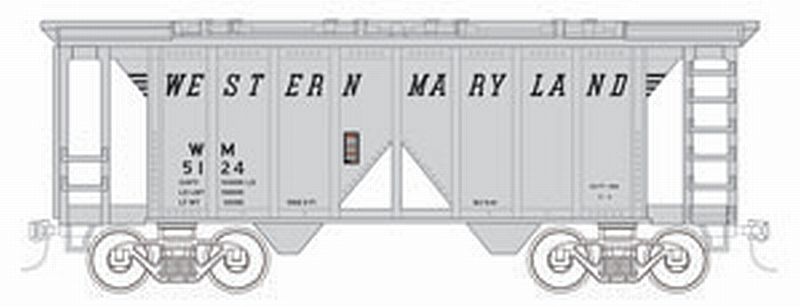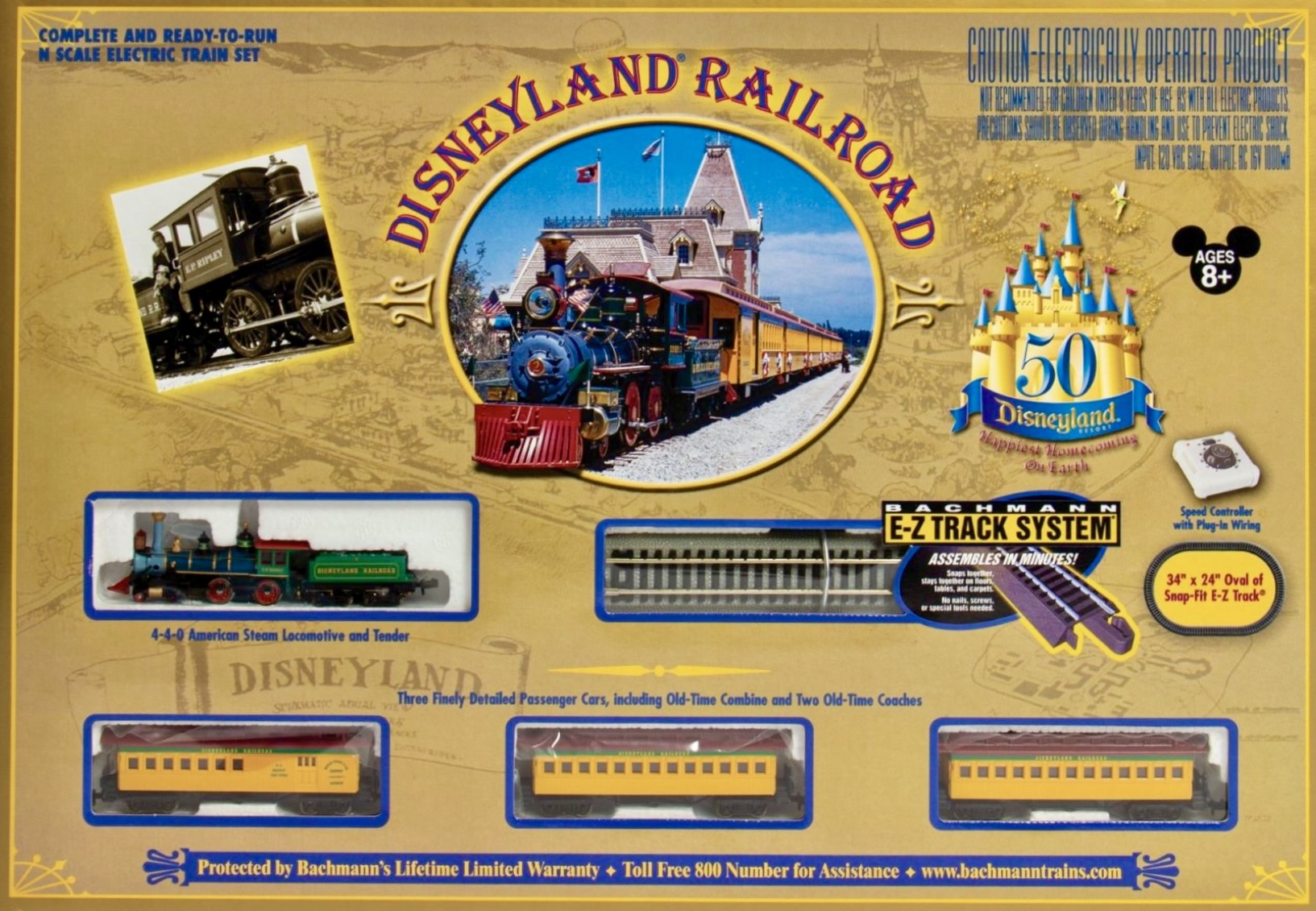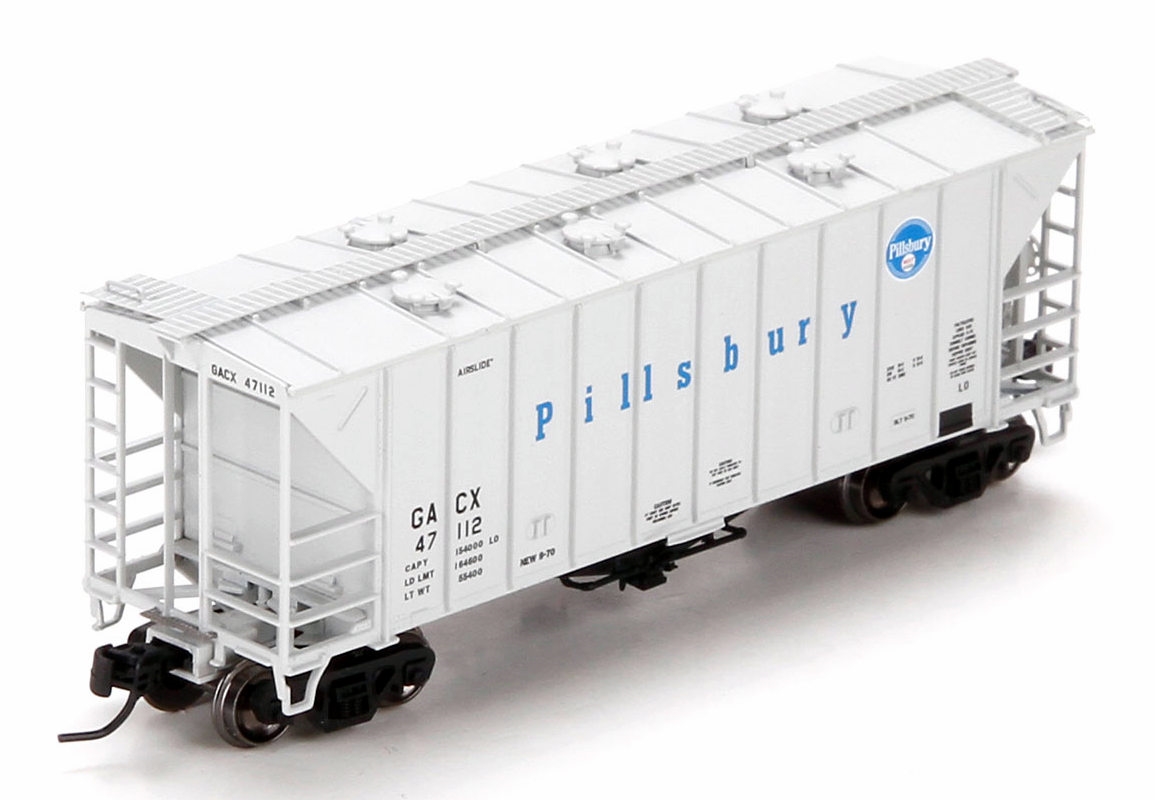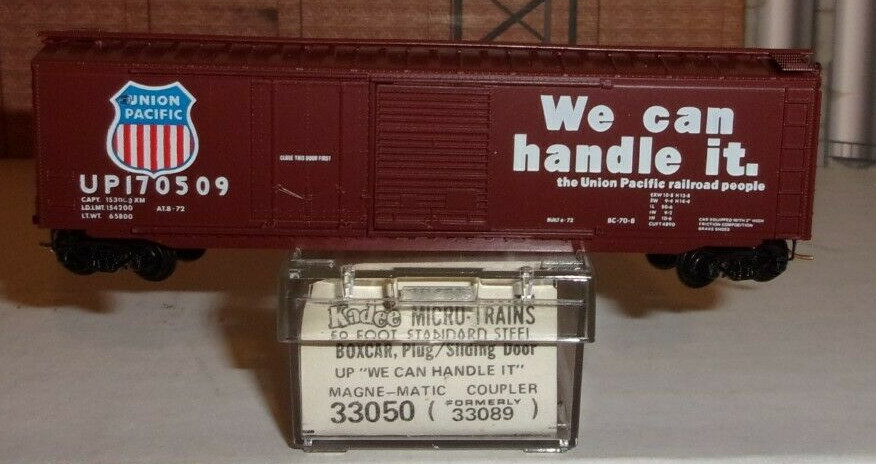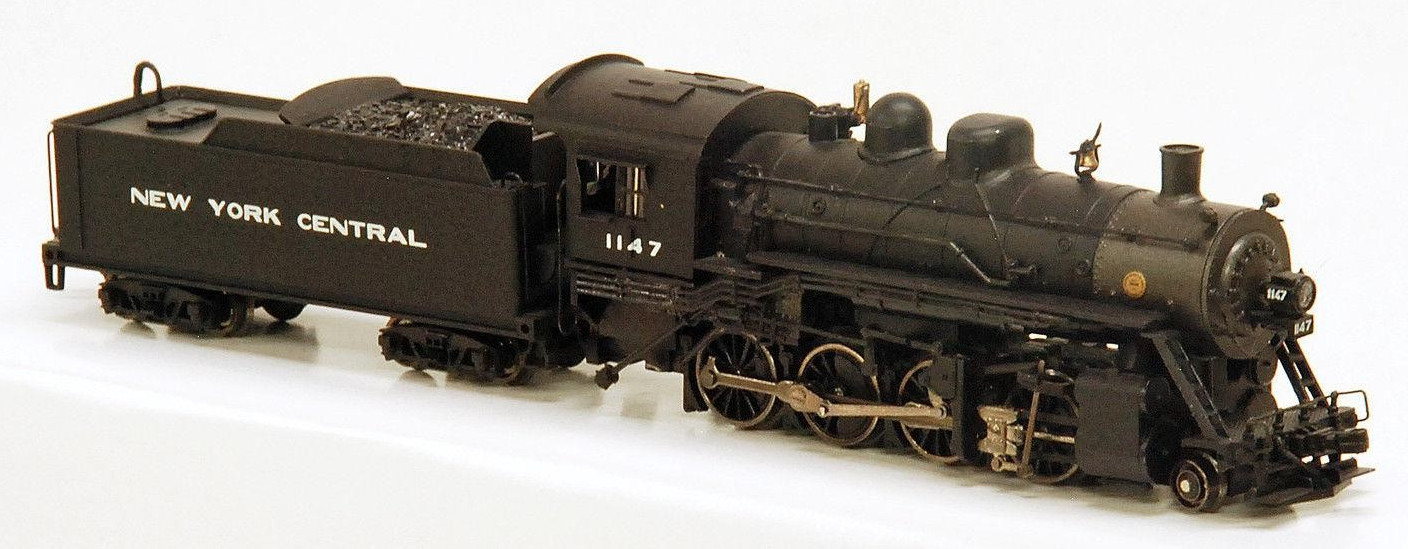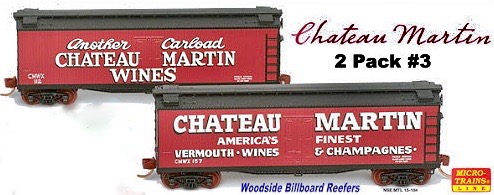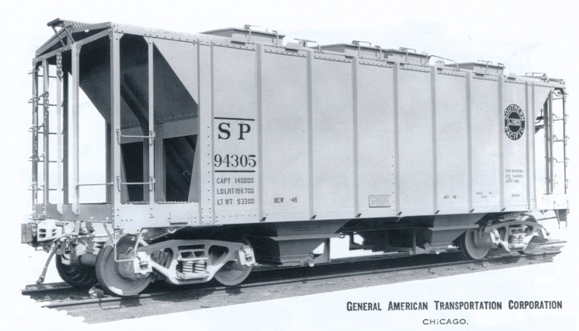Deluxe Innovations - 75212 - Covered Hopper, 2-Bay, ACF 36 Foot - Western Maryland - 2 numbers
| Stock Number | 75212 |
| Brand | Deluxe Innovations |
| Manufacturer | Deluxe Innovations |
| Body Style | V-Line Covered Hopper 2-Bay 36 Foot ACF |
| Prototype Vehicle | Covered Hopper, 2-Bay, ACF 36 Foot (Details) |
| Road or Company Name | Western Maryland (Details) |
| Reporting Marks | WM |
| Road or Reporting Number | 2 numbers |
| Paint Color(s) | Gray |
| Print Color(s) | black |
| Coupler Type | MT Magne-Matic Knuckle |
| Wheel Type | Injection Molded Plastic |
| Wheel Profile | Small Flange (Low Profile) |
| Multipack | Yes |
| Multipack Count | 2 |
| Item Category | Rolling Stock (Freight) |
| Model Type | Covered Hopper |
| Model Subtype | 2-Bay |
| Model Variety | 36 Foot ACF 70 Ton |
| Prototype Region | North America |
| Prototype Era | NA Era IV: 2nd Gen Diesel (1958 - 1978) |
| Scale | 1/160 |
| Track Gauge | N standard |
Model Information:
This model was originally produced by V-Line. Deluxe Innovations later acquired the tooling. The deLuxe models of these common cars are weighted with the same copper slugs used in their box cars for superior tracking and immunity to magnetism.
Most releases feature more than one paint scheme variation within a road name. For instance, the Missouri Pacific set features cars delivered with MP reporting marks and painted "corrosion resistant gray" that is actually a tan color, and cars lettered for MoPac subsidiaries Missouri-Illinois and St. Louis Brownsville & Mexico (both carrying the traditional buzz saw logo) that are painted in a more traditional gray color. Some of the more modern paint schemes including Delaware & Hudson and National Bureau of Standards have the four-color ACI tags. ACI stands for Automated Car Identification and worked like a grocery store bar code reader using a color TV camera instead of a laser. Unfortunately, the tags couldn't be read if they were dirty and the system fell out of favor by the early 1980's. This aspect of 70's railroading is rarely modeled but we include it on appropriate cars.
Most releases feature more than one paint scheme variation within a road name. For instance, the Missouri Pacific set features cars delivered with MP reporting marks and painted "corrosion resistant gray" that is actually a tan color, and cars lettered for MoPac subsidiaries Missouri-Illinois and St. Louis Brownsville & Mexico (both carrying the traditional buzz saw logo) that are painted in a more traditional gray color. Some of the more modern paint schemes including Delaware & Hudson and National Bureau of Standards have the four-color ACI tags. ACI stands for Automated Car Identification and worked like a grocery store bar code reader using a color TV camera instead of a laser. Unfortunately, the tags couldn't be read if they were dirty and the system fell out of favor by the early 1980's. This aspect of 70's railroading is rarely modeled but we include it on appropriate cars.
Prototype History:
This design had a life span that is truly enormous. The last cars of this design were built in the 1960's -- three decades after the first cars were built for Santa Fe. Quite a few of these cars are still in service. Because you have to stand on the roof in order to open the hatches, these cars were immune from the "No Roof Walk" rule of 1964, but a number would be scrapped when friction bearing trucks were outlawed. Amazingly, some cars are now being retired because they have hit the Federal Railroad Administration's 50 year rule!
Originally designed at the height of the Great Depression, the first ten cars of this design were delivered to Santa Fe in an austere black paint scheme. Covered hoppers have always been used for any bulk cargo that had to be protected from the elements. Some have the impression that covered hoppers are used mostly for grain. Nothing can be further from the truth. In fact, moving grain in covered hoppers has only been commonplace since the 1960's. Before that period, most grain moved in 40' box cars with grain doors temporarily nailed over the doorways. In the steam era, covered hoppers were used for cement, sand, clay, talc, and other powders. The cargo was loaded through eight square hatches in the roof. To empty the car, the hatches at the bottom are opened and the load spills out. At this point, some low man on the company ladder would have to climb into the car with a broom and sweep out the corners and the center sill. The American Car & Foundry covered hopper design was such a success that it became a defacto standard for years. Even Pullman Standard (ACF's arch enemy) built cars to the same design. The distinctive open triangles in the sides make these cars easily distinguishable even from a distance. ACF would also develop a version without the open triangles which was not as prolific as the version presented here. Amazingly, many of these cars are still in use today, in MOW and lineside service. Many have been rebuilt as ballast hoppers, including for SP, CSX, Amtrak, and Santa Fe.
Originally designed at the height of the Great Depression, the first ten cars of this design were delivered to Santa Fe in an austere black paint scheme. Covered hoppers have always been used for any bulk cargo that had to be protected from the elements. Some have the impression that covered hoppers are used mostly for grain. Nothing can be further from the truth. In fact, moving grain in covered hoppers has only been commonplace since the 1960's. Before that period, most grain moved in 40' box cars with grain doors temporarily nailed over the doorways. In the steam era, covered hoppers were used for cement, sand, clay, talc, and other powders. The cargo was loaded through eight square hatches in the roof. To empty the car, the hatches at the bottom are opened and the load spills out. At this point, some low man on the company ladder would have to climb into the car with a broom and sweep out the corners and the center sill. The American Car & Foundry covered hopper design was such a success that it became a defacto standard for years. Even Pullman Standard (ACF's arch enemy) built cars to the same design. The distinctive open triangles in the sides make these cars easily distinguishable even from a distance. ACF would also develop a version without the open triangles which was not as prolific as the version presented here. Amazingly, many of these cars are still in use today, in MOW and lineside service. Many have been rebuilt as ballast hoppers, including for SP, CSX, Amtrak, and Santa Fe.
Road Name History:
This line was established in 1852 under another name but was renamed Western Maryland Rail Road before the first rail was laid. By 1862 they had built from Baltimore to Union Bridge, Maryland at which point it became the responsibility of the Union Army. Construction resumed after the war. WM built west to Hagerstown then Cumberland where the line spilt in two. One route headed northwest to an important interchange with Pittsburgh & Lake Erie at Connellsville, Pennsylvania. The other line ran southwest into the rich coal fields around Elkins and Durban, West Virginia. On the east end, they also had routes to York and Gettysburg and an important connection with the Reading at Shippensburg, all in Pennsylvania. At 878 miles, WM was between Maine Central and Spokane Portland & Seattle in relative length.
The city of Baltimore had a large stake in the WM but sold it in 1902 to Jay Gould. The Gould empire unraveled just six years later and the WM was reorganized with Railway replacing Rail Road in the name and John D. Rockefeller holding a 43% stake. He sold those shares to Baltimore & Ohio in 1927. Accused of violating antitrust laws, B&O placed those shares in a non-voting trust.
After 1900, WM relied heavily on 2-8-0’s, ordering 177 between 1900 and 1923 (by which time other railroads were already ordering 2-8-2’s.) Some of these Consolidations were real bruisers with the same tractive effort as WM’s 2-6-6-2’s. Also in road service were 30 2-10-0 Decapods (10 Russian Decapods and 20 much larger versions,) a dozen 4-8-4’s to handle the high speed trains, and a dozen 4-6-6-4 Challengers. The Challengers turned out to be a disappointment to WM. They were rough riders and were hard on the track. As a result, they were soon demoted to pusher service alongside WM’s 25 2-8-8-2’s. A fleet of 19 low drivered Pacifics handled most of the passenger assignments. One element found on most of the WM steam fleet was low snowplow pilots in lieu of the traditional boiler tube pilots. WM was one of a few Class One railroads to employ Shay locomotives to serve steeply graded branchlines. WM had one 2-truck, two 3-truck and two 4-truck Shays. Shay #6 built in 1945 was the last Shay built by Lima Locomotive Works.
WM began to dieselize in 1947 on the east end where they would not raise the ire of their coal mining customers on the west end. The diesel fleet was surprisingly varied for a line their size with cab units from both Alco and EMD, road switchers from Alco, EMD and Baldwin and yard switchers from GE, Baldwin and Alco. The road switchers from Alco and Baldwin plus the EMD GP7;s were delivered with the long hood as the front while the EMD GP9’s were delivered with the short hood as the front. The Second Generation of diesels was all EMD.
In addition to the voluminous coal traffic, WM was a part of two bridge routes for merchandise moving between the northeast and the upper Midwest. These were the Alphabet Route (with Nickel Plate Road, Wheeling & Lake Erie, Pittsburgh & West Virginia, Reading and others) and the Central States Dispatch (with Baltimore & Ohio, Reading, Jersey Central, Lehigh & Hudson River and New Haven.) Iron ore also moved from Baltimore area ports to steel mills on the connecting P&LE.
Passenger service was a bit of an afterthought on the WM. Not only did they not have a shiny streamliner, but their heavyweight coach trains lasted only until 1957 before being discontinued. Steam generator equipped hammerhead RS-3’s replaced the Pacifics in passenger service for a few years before being reassigned to freight duty.
In 1967, B&O (by this time controlled by Chesapeake & Ohio) finally obtained permission to take overt control of the WM. Not much changed for the next five years. In 1973 they adopted the Chessie System image and 125 miles of WM mainline was abandoned in favor of trackage rights on a parallel B&O line. In 1983, the Western Maryland was absorbed into the Baltimore & Ohio. Western Maryland was known for frequently washing their locomotives in both the steam and diesel eras. They kept up this tradition until the start of the Chessie System era.
The city of Baltimore had a large stake in the WM but sold it in 1902 to Jay Gould. The Gould empire unraveled just six years later and the WM was reorganized with Railway replacing Rail Road in the name and John D. Rockefeller holding a 43% stake. He sold those shares to Baltimore & Ohio in 1927. Accused of violating antitrust laws, B&O placed those shares in a non-voting trust.
After 1900, WM relied heavily on 2-8-0’s, ordering 177 between 1900 and 1923 (by which time other railroads were already ordering 2-8-2’s.) Some of these Consolidations were real bruisers with the same tractive effort as WM’s 2-6-6-2’s. Also in road service were 30 2-10-0 Decapods (10 Russian Decapods and 20 much larger versions,) a dozen 4-8-4’s to handle the high speed trains, and a dozen 4-6-6-4 Challengers. The Challengers turned out to be a disappointment to WM. They were rough riders and were hard on the track. As a result, they were soon demoted to pusher service alongside WM’s 25 2-8-8-2’s. A fleet of 19 low drivered Pacifics handled most of the passenger assignments. One element found on most of the WM steam fleet was low snowplow pilots in lieu of the traditional boiler tube pilots. WM was one of a few Class One railroads to employ Shay locomotives to serve steeply graded branchlines. WM had one 2-truck, two 3-truck and two 4-truck Shays. Shay #6 built in 1945 was the last Shay built by Lima Locomotive Works.
WM began to dieselize in 1947 on the east end where they would not raise the ire of their coal mining customers on the west end. The diesel fleet was surprisingly varied for a line their size with cab units from both Alco and EMD, road switchers from Alco, EMD and Baldwin and yard switchers from GE, Baldwin and Alco. The road switchers from Alco and Baldwin plus the EMD GP7;s were delivered with the long hood as the front while the EMD GP9’s were delivered with the short hood as the front. The Second Generation of diesels was all EMD.
In addition to the voluminous coal traffic, WM was a part of two bridge routes for merchandise moving between the northeast and the upper Midwest. These were the Alphabet Route (with Nickel Plate Road, Wheeling & Lake Erie, Pittsburgh & West Virginia, Reading and others) and the Central States Dispatch (with Baltimore & Ohio, Reading, Jersey Central, Lehigh & Hudson River and New Haven.) Iron ore also moved from Baltimore area ports to steel mills on the connecting P&LE.
Passenger service was a bit of an afterthought on the WM. Not only did they not have a shiny streamliner, but their heavyweight coach trains lasted only until 1957 before being discontinued. Steam generator equipped hammerhead RS-3’s replaced the Pacifics in passenger service for a few years before being reassigned to freight duty.
In 1967, B&O (by this time controlled by Chesapeake & Ohio) finally obtained permission to take overt control of the WM. Not much changed for the next five years. In 1973 they adopted the Chessie System image and 125 miles of WM mainline was abandoned in favor of trackage rights on a parallel B&O line. In 1983, the Western Maryland was absorbed into the Baltimore & Ohio. Western Maryland was known for frequently washing their locomotives in both the steam and diesel eras. They kept up this tradition until the start of the Chessie System era.
Brand/Importer Information:
DeLuxe Innovations is a "wholesale manufacturer" of model trains. We manufacture scale replica train models and sell them to hobby shops and distributors worldwide. 2013 marked the 20 year anniversary of DeLuxe Innovations brand trains. There are over 25 body styles in our product line and all of the cars in our single and multi-car packs have different road numbers. DeLuxe Innovations, Inc. is owned by Dave Ferrari, founder of Squeak N Products. We are located in Midland Park, New Jersey. When Dave purchased the business it was located in Burbank, California which would have been a bit of a long commute so the move to the East Coast was planned. Our first East Coast location was in Whippany, NJ along the Whippany River.
The business was started in 1993 by George Johnsen and Roberta Liebreich in Burbank, California. They had a philosophy that just wouldn't allow using a coal car as a "stand in" for a woodchip car, or printing any and all boxcar paint schemes on a PS-1. Starting with the release of the first ever etched metal parts for a ready to run car (1994's Twinstack's metal walkways) through the full dimension underframe and etched metal roofwalk (1996's 1944 AAR Boxcar) to the challenging RoadRailer system (2000), our products have been accurate to target the modeler or enthusiast.
You can also follow DeLuxe on Twitter
The business was started in 1993 by George Johnsen and Roberta Liebreich in Burbank, California. They had a philosophy that just wouldn't allow using a coal car as a "stand in" for a woodchip car, or printing any and all boxcar paint schemes on a PS-1. Starting with the release of the first ever etched metal parts for a ready to run car (1994's Twinstack's metal walkways) through the full dimension underframe and etched metal roofwalk (1996's 1944 AAR Boxcar) to the challenging RoadRailer system (2000), our products have been accurate to target the modeler or enthusiast.
You can also follow DeLuxe on Twitter
Item created by: Powderman
on 2018-11-16 16:22:14
Last edited by: CNW400 on 2020-11-02 11:59:21
If you see errors or missing data in this entry, please feel free to log in and edit it. Anyone with a Gmail account can log in instantly.
Last edited by: CNW400 on 2020-11-02 11:59:21
If you see errors or missing data in this entry, please feel free to log in and edit it. Anyone with a Gmail account can log in instantly.


